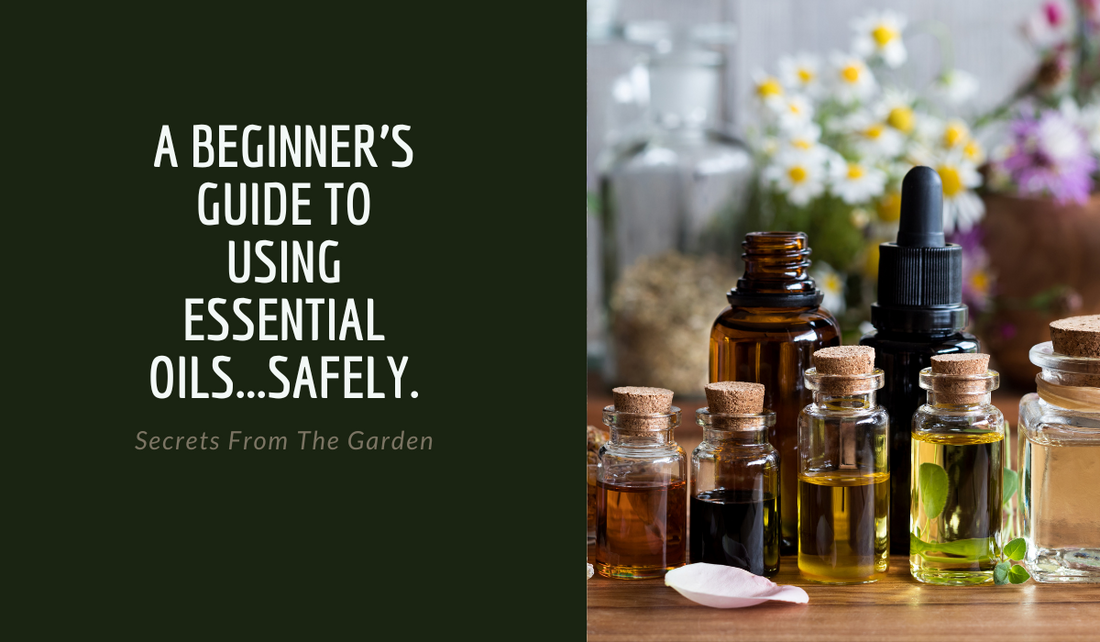
A Beginner's Guide to Using Essential Oils Safely
A Beginner's Guide to Using Essential Oils Safely
Essential oils have become a staple in many homes, cherished for their beautiful aromas and potential wellness benefits. From calming lavender to invigorating peppermint, these concentrated plant extracts can be a wonderful addition to your self-care routine. However, their potency means that a little knowledge goes a long way. To ensure a safe and positive experience, it's crucial to understand the basics of how to use them correctly.
-
Dilute, Dilute, Dilute!
This is the golden rule of essential oil use, especially for topical application. Essential oils are highly concentrated and can cause skin irritation, redness, or even burns if applied "neat" (undiluted).
How to dilute: Use a "carrier oil," which is a fatty vegetable oil that helps to dilute the essential oil and safely carry it onto your skin. Popular carrier oils include:
-
Jojoba oil
-
Coconut oil
-
Avocado oil
A good starting point for adults is a 2-3% dilution, which is roughly 2-3 drops of essential oil per teaspoon of carrier oil. For children, the elderly, or those with sensitive skin, a lower dilution (1% or less) is recommended.
Patch Test: Before applying a new oil to a larger area of your body, always perform a patch test. Apply a small, diluted amount to a discreet spot on your skin (like your inner arm) and wait 24 hours to check for any adverse reactions. This is very important! I personally have broken out using specific brands as well. It would be beneficial to research different brands, dilute properly, and patch test before applying over large areas of the body. Some brands I love and absolutely recommend are __Eden’s Garden __, Plant Therapy, and Rocky Mountain Oils, and some that haven’t quite worked for my skin include Young Living and Doterra.
Application methods
There are three primary ways to use essential oils:
-
Aromatic: This involves inhaling the aroma. The most common method is using a diffuser, which disperses the oil into the air. You can also simply inhale directly from the bottle or place a drop on a cotton ball or tissue. When diffusing, aim for 30-60 minutes on, then 30-60 minutes off to avoid overexposure. Common signs of overexposure or sensitivity would be skin reactions, or respiratory distress.
-
Topical: This is the application of diluted essential oils directly to the skin. Common areas include the wrists, temples, back of the neck, and the bottoms of your feet. This is effective for targeted benefits, like applying peppermint to the temples for a headache or lavender to your wrists for a calming effect.
-
Internal: This is controversial and usually only recommended by untrained professionals (with no aromatherapist education). Usually they are a "representative" or "advocate" for that specific brand: one bottle (usually cheaper) is for inhaling, while the other (much more expensive) is for internal consumption.It’s pure marketing at its finest. Yet, if one was to go outside of that specific company's recommendations, the top leading aromatherapist's in the country would tell you otherwise, that it is completely unsafe to consume essential oils internally without the guidance of a trained aromatherapist.
Side Effects of consuming essential oils internally: nausea, vomiting, diarrhea, stomach pain, and even more serious issues like seizures or coma. -
3. Be Aware of Photosensitive Oils
Certain essential oils, particularly citrus oils like bergamot, lemon, lime, and grapefruit, are "phototoxic." This means they can cause a severe skin reaction, including blistering and discoloration, if applied topically and then exposed to direct sunlight or UV light.
If you're using a phototoxic oil on your skin, it's best to do so at night or avoid sun exposure for at least 12-18 hours after application. Non-phototoxic citrus oils, like sweet orange, are a safer option for daytime use.

Essential oil dilution chart:
Please feel free to screen shot this and save it for the future.


